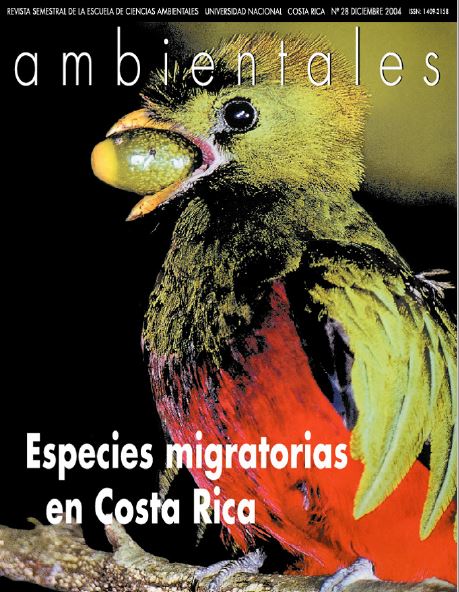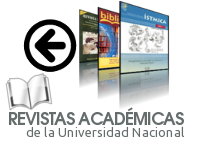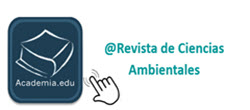Migration of Sea Turtles
DOI:
https://doi.org/10.15359/rca.28-1.3Keywords:
Migración; Tortugas marinasAbstract
The geographic separation of sea turtle foraging, refu-ge and reproductive habitats makes them undertake extensive migrations. To study this phenomenon, ge-netic analysis, tagging and telemetry have been used, and it has been shown that they can swim hundreds or even thousands of kilometers between nesting bea-ches and foraging habitats and vice versa. Green and hawksbill turtles move towards benthic ha-bitats, where sea grass and sponges grow; while olive ridleys and leatherback turtles migrate to larger and more variable foraging grounds. Currents, eddies and oceanic fronts can influence migrations. Sea turtle sur-vival depend in large measures on the management given to the nesting beaches and surroundings. More resources are needed to improve protection within Costa Rica, and thereby provide an example for other countries, so that when Costa Rican sea turtles pass through their waters, they will help in their protection.
References
Asamblea Legislativa. Ley de protección, conservación y recuperación de las poblaciones de tortugas marinas.
Autoridad Nacional Cites. “Informe Nacional Costa Rica”, en Primera Reunión de Diálogo Cites de los Estados de Distribución de la Carey en el Gran Caribe, 2001.
Balazs, G.H. “Factores a considerar en el marcado de tortugas marinas”, en Eckert, K.L. et al. (eds.). 2000. Técnicas de Investigación y Manejo para la Conservación de las Tortugas Marinas. Grupo de Especialistas en Tortugas Marinas-UICN.
Bass, A.L., S.P. Epperly y L. Braun-McNeill. “Multi-year analysis of stocl composition of a loggerhead turtle (Caretta caretta) foraging habitat using maximum likelihood and Bayesian methods”, en Conservation Genetics, en prensa.
Bass, A. L., C. J. Lagueux y B.W. Bowen. “Origin of green turtles, Chelonia mydas, at Sleeping Rocks off the northeast coast of Nicaragua”, en Copeia 4,1998.
Bjorndal, K. A. et al. “Reproductive biology of the hawksbill Eretmochelys imbricata at Tortuguero, Costa Rica, with notes on the ecology of the species in the Caribbean”, en Biological Conservation 34,1985.
Bjorndal, K.A., A.B. Bolten y C.J. Lagueux. “Decline of the nesting population of hawksbill turtles at Tortuguero, Costa Rica”, en Conservation Biology 7 (4),1993.
Bjorndal, K. A. “Roles of loggerhead sea turtles in marine ecosystems”,en Bolten, A.B. y B.E. Witherington (eds.). 2003. Loggerhead sea turtles. Smithsonian Institution Press. Washington D.C.
Bjorndal, K.A., A. B. Bolten y S. Troëng. “Population structure and genetic diversity in green turtles nesting at Tortuguero, Costa Rica, based on mitocondrial DNA control region sequences”, en Marine Biology, en revisión.
Bowen, B.W. et al. “Global population structure and natural history of the green turtle (Chelonia mydas) in terms of matriarchal phylogeny”, en Evolution 46 (4),1992.
Bowen B.W. et al. “Global phylogeography of the ridley sea turtles (Lepidochelys spp.) as inferred from mitocondrial DNA sequences”, en Genética 101,1998.
Carr, A. y L. Giovannoli. “The ecology and migrations of sea turtles.2. Results of field work in Costa Rica,1955”,en Amer. Mus. Nov. 183,1957.
Carr, A. y S. Stancyk. “Observations on the ecology and survival outlook of the hawksbill turtle”, en Biological Conservation 8,1975.
Carr, A., M.H. Carr y A.B. Meylan. “The ecology and migrations of sea turtles, 7.The west Caribbean green turtle colony”, en Bull. Amer. Mus. Nat. Hist. 162,1978.
Chandler, M. “New records of marine turtle in Chile”, en Marine Turtle Newsletter 52,1991.
Cornelius, S.E. y D.C. Robinson. “Tag recoveries for ridleys nesting in Costa Rica”, en Marine Turtle Newsletter 21,1982.
Dutton, P.H. et al. “Global phylogeography of the leatherback turtle (Dermochelys coriacea)”, en Journal of Zoology 248, 1999.
Dutton, P.H. et al. “Molecular ecology of leatherbacks in the Pacific”, en Pilcher, N. y G. Ismail (eds.). 2000. Sea turtles of the Indo-Pacific: Research, management and conservation. Asean Academic Press. London.
Eckert, S. A. “Distant fisheries implicated in the loss of the world’s largest leatherback nesting population”, en Marine Turtle Newslette 78,1997.
Eckert, S.A. “Sistemas de adquisición de datos para el seguimiento del comportamiento de tortugas marinas”, en Eckert, K.L. et al. (eds.). 2000. Técnicas de Investigación y Manejo para la Conservación de las Tortugas Marinas. Grupo de Especialistas en Tortugas Marinas-UICN.
Ehrhart, L.M, W.E. Redfoot y D.A. Bagley. “Green turtles in three developmental habitats of the Florida Atlantic coast: population structure, fibropapillomatosis and post-juvenile migratory destinations”, en Proceedings of the 18th Annual Sea Turtle Symposium, 2000
Encalada, S. et al. “Phylogeography and population structure of the Atlantic and Mediterranean green turtle Chelonia mydas: a mitocondrial DNA control region sequence assessment”, en Molecular Ecology 5,1996.
Engstrom, T. et al. “Genetic identity of green turtles in Bermu da waters”, en Proceedings of the 17th Annual Sea Turtle Symposium, 1998.
Evans, D. y S. Troëng. “Using satellite tracking of green, Chelonia mydas, and hawksbill, Eretmochelys imbricate, turtles from Tortuguero, Costa Rica, in community and international education”, en Proceedings of the 21th Annual Sea Turtle Symposium, en prensa.
Ferraroli, S. et al. “Where leatherback turtles meet fisheries”, en Nature 429, 2004.
FitzSimmons, N., C. Moritz y B. W. Bowen. “Identificación de poblaciones”, en Eckert, K.L. et al.(eds.). Op. cit
Harrison, E. et al. 2003. Reporte Programa de Tortuga Verde 2002 Tortuguero, Costa Rica (impresión doméstica).
Hays, G.C., J.D.R. Houghton y A. Myers. “Pan-Atlantic leather-back turtle movements”, en Nature 429,2004.
Kopitsky, K. et al. “Reproductive ecology of olive ridleys in the open ocean in the Eastern Tropical Pacific”, en Proceedings of the 20th Annual Symposium on Sea Turtle Biology and Conservation, 2002
Lahanas, P. et al. “Genetic composition of a green turtle (Chelonia mydas) feeding ground population: evidence for multiple origins”, en Marine Biology 130,1998.
León, Y.M. y K.A. Bjorndal. “Selective feeding in the hawksbill turtle, an important predator in coral reef ecosystems”, en Marine Ecology Progress Series 245, 2002
Lima, E. H. S. M. y S. Troëng. “¿Existe una conexión entre las tortugas marinas que se alimentan en Brasil y las que anidan en Costa Rica?”, en Noticiero de Tortugas Marinas 94, 2001.
Luke, K. et al. “Origins of green turtle (Chelonia mydas) fee ding aggregations around Barbados,West Indies”, en Marine Biology 144, 2004.
Luschi P., G. C. Hays y F. Papi. “A review of long-distance movements by marine turtles, and the possible role of ocean currents”, en Oikos 103, 2003.
Meylan, A. B. “International movements of immature and adult hawksbill turtles (Eretmochelys imbricate) in the Caribbean region”, en Chelonian Conservation & Biology 3 (2), 1999.
Morreale S.J. et al. “Migration corridor for sea turtles, en Nature 384,1996.
Mortimer, J. A. “The feeding ecology of the west Caribbean green turtle (Chelonia mydas). in Nicaragua”, en Biotropica 13 (1), 1981.
Ordóñez, C. et al. “Chiriquí Beach, Panamá, the most important leatherback nesting beach in Central America”, en Chelonian Conservation & Biology, en revision.
Peare, T. y P.G. Parker. “Local genetic structure within two rookeries of Chelonia mydas (the green turtle)”, en Heredity 77, 1996.
Plotkin, P.T., R.A. Byles y D.W. Owens. “Migratory and reproductive behavior of Lepidochelys olivacea in the eastern Pacific Ocean”, en Proceedings of the 13th Annual Symposium on Sea Turtle Biology and Conservation, 1994
Plotkin, P.T. et al. “Independent versus socially facilitated oceanic migrations of the olive ridley, Lepidochelys olivacea” en Marine Biology 122, 1995.
Pitman, R.L. y P.H. Dutton. “Killer whale predation on a leatherback turtle in the northeast Pacific”, en Pacific Science 58, 2004.
Polovina, J.J. et al. “Forage and migration habitat of loggerhead (Caretta caretta) and olive ridley (Lepidochelys olivacea) sea turtles in the central North Pacific Ocean”, en Fish. Oceanogr. 13 (1), 2004.
Reyes, C. et al. 2002. Reporte Programa de Tortuga Verde, 2001, Tortuguero, Costa Rica (impresión doméstica).
Ross, J. P. y C. J. Lagueux. “Tag return from a male green sea turtle”, en Marine Turtle Newsletter 62, 1993.
Spotila, J.R. et al. “Pacific leatherback turtles face extinction”, en Nature 405, 2000.
Troëng, S., E. Harrison y D. Evans.“Leatherback nesting trend and threats at Tortuguero, Costa Rica”, en Chelonian Conservation & Biology, en revisión.
Troëng, S., P.H. Dutton y D. Evans. “Migration of hawksbill turtles Eretmochelys imbricata from Tortuguero, Costa Rica”, en Ecography, en prensa.
Troëng, S. et al. “Migration of Green Turtles Chelonia mydas from Tortuguero,Costa Rica”, en Marine Biology, en revisión.
Troëng, S. 1997. Report on the 1997 Green Turtle Program at Tortuguero, Costa Rica (impresión doméstica).
Troëng, S., R. Wershoven y E. Harrison. “Juvenil de tortuga ver-de marcado en Florida y registrado en Tortuguero, Costa Rica”, en Noticiero de Tortugas Marinas 99, 2002.
Troëng, S., D. Chacón y B. Dick. “Possible decline in leatherback turtle Dermochelys coriacea nesting along the coast of Caribbean Central America”, en Oryx 38 (4),2004.
Downloads
Published
How to Cite
Issue
Section
License

This work is licensed under a Creative Commons Attribution-NonCommercial-ShareAlike 4.0 International License.



















